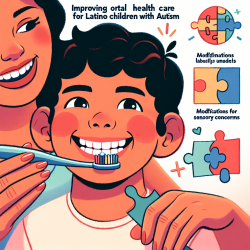In the realm of speech-language pathology, understanding the multifaceted challenges faced by children with communication disorders is crucial. A recent study titled "Development and Validation of a Measurement Tool: Evaluation of Environmental Factors Influencing the Social Participation of Primary School Students with Communication Disorder" provides a data-driven approach to address these challenges.
This study underscores the significant impact environmental factors have on the social participation of children with communication disorders. By developing a robust measurement tool, the researchers aimed to identify both the facilitators and barriers within various life environments of these children. The tool comprises two comprehensive questionnaires, one for parents and another for school personnel, ensuring a holistic view of the child's environmental context.
Key Findings and Practical Applications
For practitioners, leveraging the insights from this study can enhance intervention strategies and ultimately improve outcomes for children. Here are some actionable steps based on the research findings:
- Holistic Assessment: Utilize the developed questionnaires to gather detailed information about the child's home, school, and community environments. This comprehensive assessment can highlight specific areas needing intervention.
- Targeted Interventions: Based on the questionnaire results, design interventions that address the identified environmental barriers. For instance, if the classroom's physical layout is a barrier, consider rearranging the seating to facilitate better communication and interaction.
- Collaborative Approach: Engage parents, teachers, and other stakeholders in the intervention process. Sharing the questionnaire findings can foster a collaborative environment where everyone works towards common goals.
- Monitor and Adjust: Regularly reassess the child's environment using the questionnaires to track progress and make necessary adjustments to the intervention plan.
Encouraging Further Research
While the study provides a solid foundation, there is always room for further research. Practitioners are encouraged to contribute to this growing body of knowledge by:
- Conducting Longitudinal Studies: Follow children over extended periods to observe the long-term impact of environmental interventions on their social participation.
- Exploring Diverse Populations: Validate the measurement tool across different cultural and linguistic groups to ensure its applicability and reliability in varied contexts.
- Integrating Technological Solutions: Investigate how digital tools and online therapy platforms, like those provided by TinyEYE, can complement traditional interventions and enhance the overall efficacy of environmental modifications.
To read the original research paper, please follow this link: Development and Validation of a Measurement Tool: Evaluation of Environmental Factors Influencing the Social Participation of Primary School Students with Communication Disorder.
By integrating these research-backed strategies into practice, we can make significant strides in enhancing the social participation and overall well-being of children with communication disorders.










